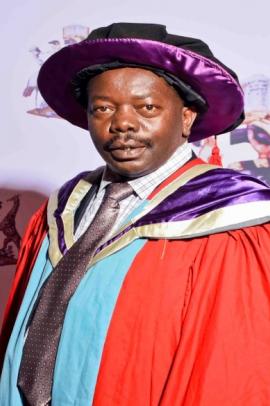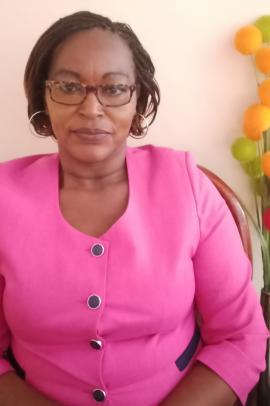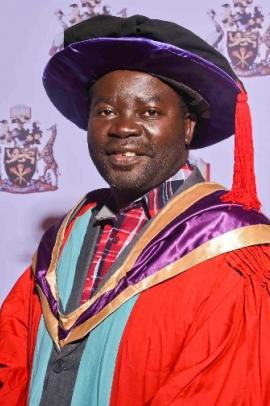Kiragu Henry Macharia

Henry Macharia Kiragu graduates with a PhD in Electrical and Electronic Engineering during the 63rd Graduation ceremony of the University of Nairobi on 25th September, 2020. Kiragu is a Lecturer at the Multimedia University of Kenya in the department of Electrical and Communication Engineering. He has taught undergraduate students in the areas of: Signals and Systems, Digital Communication, Antenna Engineering and Microprocessors. He has also served as the Academic Trips Coordinator for the Faculty of Engineering of Multimedia University for five years from 2014 to 2019. From the year 2004 to 2009, Kiragu was a lecturer at the Kenya College of Communications Technology (KCCT) in the Access Networks Section.
He received his Masters in Electrical and Electronic Engineering degree from the University of Nairobi in 2013 and a Bachelor of Technology in Electrical and Communication Engineering from Moi University in 1994. He has also undergone practical training in Telecommunication Outside Plant Techniques in Kitakyushu, Japan and is registered as a Graduate Engineer by the Engineers Board of Kenya (EBK). His research interests are in the fields of: Image Processing, Mobile Communication Channel Estimation, Radio Propagation and Optical Communication.
Project Summary
Acquisition and Reconstruction of Sparse Magnetic Resonance Images Using Compressive Sampling Methods
Research Supervisor
Prof. Elijah Mwangi, Dr. George Kamucha
Magnetic Resonance Imaging (MRI) has some attractive advantages over other medical imaging techniques. Its widespread application as a medical diagnostic tool is however hindered by its lengthy acquisition time as well as reconstruction-related artifacts. Magnetic Resonance (MR) images are usually sparse or compressible in the Discrete Wavelet Transform (DWT) or the Discrete Fourier Transform (DFT) domains. The two problems associated with MRI can therefore be solved using Compressive Sampling (CS) methods. In this thesis, seven proposed algorithms that utilize the CS theory to addresses the limitations of conventional MRI are presented. Each of the proposed method exploits the compressibility of the MR images to reconstruct them from only a few incoherent measurements. The Peak Signal to Noise Ratio (PSNR) as well as the Structural SIMilarity (SSIM) measures have been used to assess the performance of the proposed methods. Computer simulation results demonstrated that the proposed methods reduce the reconstruction artifacts and noise by between 1.2 dB and 1.75 dB for a given percentage measurement. Among the proposed methods, the one that yields the best results is the one referred to in the thesis as selective acquisition and artifacts suppression. This method involves acquisition of an under-sampled k-space by employing a smaller number of phase encoding gradient steps than that dictated by the Nyquist sampling rate. The MR image reconstructed from the under-sampled k-space is then randomly sampled and reconstructed using the Orthogonal Matching Pursuit (OMP) greedy method in the DWT domain. To improve the robustness of the method, a proposed apodization function is then used to suppress the reconstruction artifacts. Simulation results based on MATLAB show that this proposed method reduces the concomitant artifacts by 1.75 dB for a given percentage measurement. This quality improvement has been shown to translate to approximately 20% reduction in scan-time compared to other reported CS-based MRI techniques for a given reconstructed image quality
Links
https://scholar.google.com/citations?user=L-MF2IwAAAAJ&hl=en


